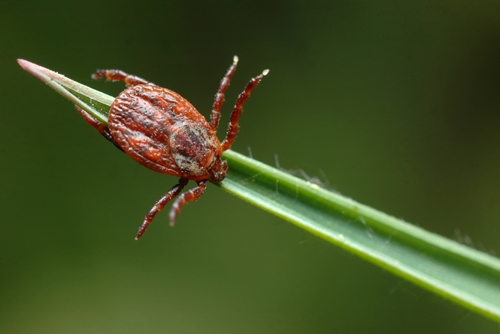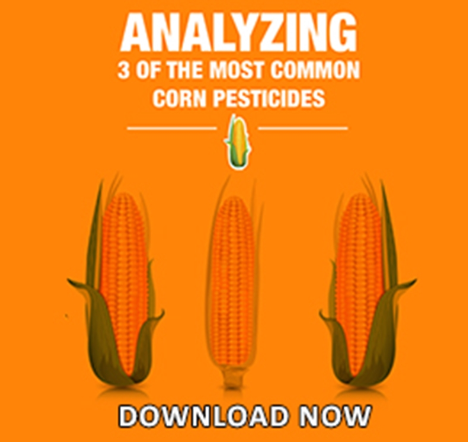What is Dicofol?

![]()
Mites are tiny, spider-like creatures that thrive in the same rich, moist soils that many crops do. Because they cohabitate with plants in some environments, they're also a major pest to farmers. They can infest and damage a number of plant varieties, hurting farmers' yields and costing them money. To fight these very small pests, farmers use miticides, like dicofol.
Understand dicofol
Dicofol is an organochlorine pesticide that's effective against mites, but controversial because of its environmental impact. Written as C14H9Cl5O or 2,2,2-trichloro-1,1-bis(4-chlorophenyl)ethano, this acaricide is used on a variety of crops including cotton, apples, citrus fruits, mint, strawberries, beans, peppers, tomatoes, walnuts, stone fruits, cucumbers, ornamentals, and other fruits and vegetables.
Among the various mites that dicofol is effective against, it is often used on the red spider mite, Pesticide News explained.
"Dicofol is used to kill crop-feeding mite pests such as the red spider mite. It is a contact poison which kills the pest after being ingested and picked up from the surface of the crop. In many countries, dicofol is also used in combination with other pesticides such as the organophosphates parathion-methyl, and dimethoate," according to the pesticide information site.
There are a number of commercial varieties that feature this miticide such as Acarin, Cekudifol, Decofol, Dicaron, Dicomite, Difol, Hilfol, Kelthane, and Mitigan. In its purest form, dicofol is a white crystal, however in most applications it appears as an amber-colored, viscous liquid that smells like hay.
According to Oregon State University, dicofol was outlawed for a brief period in the 1980s because of the way it was made and how much DDT was involved. Initially, the creation of dicofol would create a substantial amount of DDT, which seriously impacted the environment. Dicofol is chemically similar to DTT – C14H9Cl5 – which is lacking the oxygen component of its miticide relative.
Environmental impact
Dicofol was brought back after a new manufacturing process showed that the chemical had less than 0.1 percent DDT. It is now approved for many fruits, vegetables and field crops, but the U.S. Environmental Protection Agency asked manufacturers to stop producing the chemical for lawn uses and they complied.
The EPA suggested people stop using dicofol on lawns because of the potential environmental repercussions. In 2006, the EPA created an amended Reregistration Eligibility Decision for the chemical which has since drastically cut down on its use. In 2011, the EPA requested voluntary cancelation of all dicofol uses in the U.S. by late 2016.
Dicofol is the last organochlorine pesticide to go through these processes in the U.S., and its likely all due to the environmental concerns. As OSU explained, there are several impacts the chemical can have on different environments and organisms.
Birds - Dicofol is a dangerous substance to most birds. It is tied to eggshell thinning and reduced fertility, OSU explained. Quail, pheasant, dove and screech owl are among the affected birds.
Waterlife - This chemical is significantly more toxic to aquatic life. Small animals like shrimp are specifically at risk as well as algae, fish and invertebrates.
Bees - Dicofol is not toxic to bees and there are no known negative side effects.
Water - This pesticide absorbs into the sentiment in most water, OSU explained, but it also degrades in UV light. It is insoluble in water and unlikely to leech through the soil in great depths. A more likely route to water pollution is through erosion or improper application.
Land and vegetation - Dicofol has a 60-day half-life in soil and is degradable in UV light. It is found in soil but only on the surface. The chemical can remain in plants for up to two years, according to OSU.
Humans - Long- or short-term intake of residual dicofol is unlikely to present any danger to human health, according to the EPA.
Dicofol is also sold as Kelthane (TM) ; 4.4'-Dichloro-a-[trichloromethyl]benzhydrol; 1.1-Bis(p-chlorophenyl)-2.2.2-trichloroethanol; Di(p-chlorophenyl)trichloromethylcarbinol.
For over 30 years Greyhound Chromatography has been supplying high quality Chromatography consumables to laboratories around the world. Greyhound’s extensive range covers all areas of Environmental, Petrochemical, Food, Forensics, Chemical and Pharmaceutical analysis. Backed by a highly experienced technical services team, Greyhound is the preferred source amongst today’s analysts.
Greyhound Chromatography is pleased to supply Chem Service Certified Reference Standards to Research and Analysis laboratories worldwide.
The benefits of using Chem Service Certified Reference Standards:
High Quality: High purity chemicals for use as certified reference materials
Cost Effective: Products packaged in small quantities to minimize expenses
Wide Selection: 1,200 pesticide and metabolite reference standards (including banned and discontinued items)
Certification backed with experience: 50 years of experience. ISO 9001:2008 : ISO/IEC 17025:2005 certification :
ISO Guide 34:2009 For Organic Reference Material
CONTACT US
Tel: +44 (0) 151 649 4000
Email: marketing@greyhoundchrom.com
FOLLOW US
YOU MAY ALSO BE INTERESTED IN OUR NEWSLETTER
















